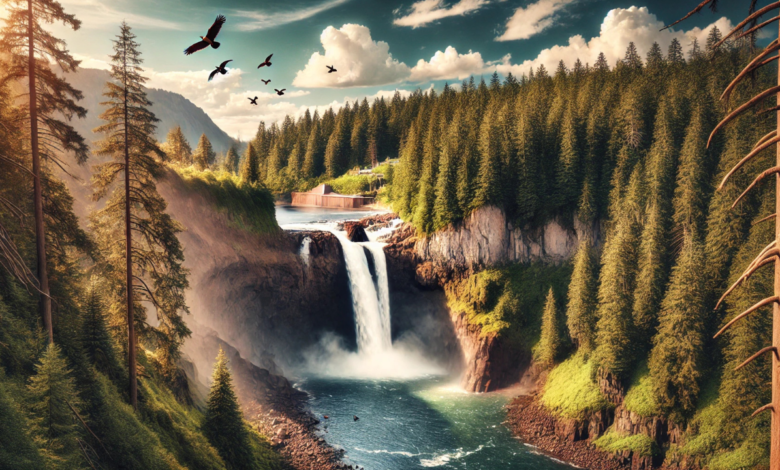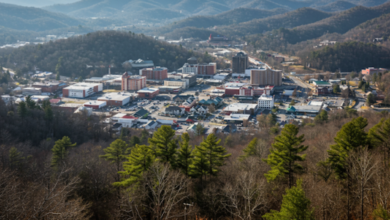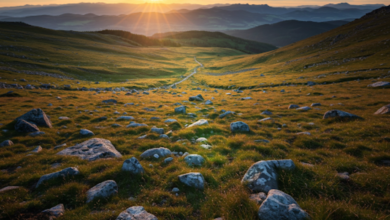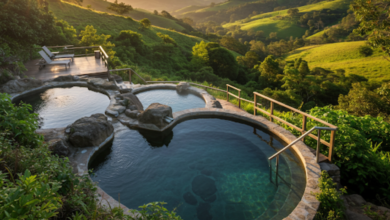Eagle falls washington Eagle Falls, Washington

Eagle Falls, nestled in the heart of Washington, is a natural treasure that combines breathtaking views, rich history, and outdoor adventure. eagle falls washington With its cascading waters, tranquil surroundings, and variety of recreational opportunities, it has become one of the state’s most captivating destinations for nature lovers and thrill-seekers alike. Whether you’re planning a peaceful escape or an exhilarating outdoor adventure, Eagle Falls offers something for everyone. This article delves into everything you need to know about Eagle Falls, from its stunning beauty to the activities available, and how you can make the most of your visit.
1. Location and Accessibility
Where is Eagle Falls located in Washington?
Eagle Falls is located in Snohomish County, in the state of Washington. Situated in the scenic Cascade Range, the falls are part of the Snoqualmie River, approximately 30 miles northeast of Seattle. The falls are nestled between the towns of Gold Bar and Index, making it easily accessible for visitors traveling from major cities. The nearest town, Gold Bar, offers a variety of local amenities, including accommodations, restaurants, and shops.
How to Get to Eagle Falls

To visit Eagle Falls, most travelers will start from Seattle. The drive from Seattle to Eagle Falls typically takes about 1 hour and 30 minutes. From Seattle, take Interstate 5 North to U.S. Route 2 East toward Snohomish. Continue on U.S. Route 2 until you reach Gold Bar, and then follow the signs to the falls. The last stretch of the drive involves a short jaunt along a well-maintained gravel road leading directly to the falls.
Best Time to Visit Eagle Falls
The best time to visit Eagle Falls is during the late spring to early fall months, when the weather is mild and the trail conditions are optimal. However, each season brings its own charm. In spring, the water flow at the falls is typically at its peak, thanks to snowmelt from the surrounding mountains. Summer offers the best hiking conditions, with dry trails and warm temperatures perfect for outdoor activities. Fall is ideal for those looking to enjoy the autumn foliage surrounding the falls, while winter offers a serene and quiet experience, though hiking conditions can be more challenging due to snow and ice.
2. The Beauty and Attraction of Eagle Falls
Overview of Eagle Falls’ Unique Features
Eagle Falls is known for its stunning beauty and dramatic scenery. The waterfall, which plunges over 100 feet into the Snoqualmie River below, offers visitors a picturesque view of water tumbling over the rocks in a powerful cascade. The surrounding area is rich in lush green forests, towering trees, and a variety of plant life, creating a serene atmosphere that makes it feel like a world away from the bustling cities nearby. The waterfall itself is best viewed from the Eagle Falls Trail, which offers a perfect vantage point for visitors to appreciate the full scope of its beauty.
Description of the Surrounding Area
Beyond the falls themselves, the surrounding landscape of Eagle Falls is an adventurer’s dream. The area is home to numerous hiking trails that provide unique perspectives of the waterfall, nearby rivers, and the dense forest. Hiking through this picturesque landscape offers views of wildflowers in the spring, vibrant autumn colors in the fall, and snow-covered scenery in the winter. The nearby Snoqualmie River is an additional draw, offering a peaceful setting for fishing, kayaking, or simply relaxing along the shore. The area is also home to a variety of wildlife, including birds of prey, deer, and various species of fish, making it a great spot for wildlife watching.
Importance of Eagle Falls in Local History
Eagle Falls holds significant cultural and historical importance in the region, particularly for Native American communities. The Snoqualmie tribe, which is native to the area, has long regarded the falls as a spiritual site. The area around Eagle Falls is steeped in indigenous history, and the falls themselves were believed to hold spiritual significance. Many visitors come to Eagle Falls not just for its natural beauty but also for the sense of connection to the land and the stories that have been passed down through generations.
3. Activities and Things to Do at Eagle Falls
Hiking Trails Around Eagle Falls
Eagle Falls is an excellent destination for outdoor enthusiasts, with numerous hiking trails that cater to all levels of experience. The most popular trail is the Eagle Falls Trail, a relatively short and moderate hike that leads directly to the falls. This 0.6-mile trail is well-maintained and features both paved and dirt sections, making it accessible for most visitors. Along the way, hikers can enjoy scenic views of the surrounding forests and wildlife. For those seeking more challenging hikes, there are several other trails in the area, such as the Barclay Lake Trail, which offers a more strenuous option with views of the nearby peaks and valleys.
Fishing, Photography, and Wildlife Watching
Eagle Falls is a popular spot for fishing, especially for those looking to catch salmon, trout, and steelhead. The nearby Snoqualmie River provides ample opportunities for anglers to cast their lines and enjoy the peaceful atmosphere. The falls themselves also make for a fantastic photography location, with their dramatic drop and surrounding scenery. Whether you’re a professional photographer or just someone who enjoys snapping photos of nature, you’ll find countless opportunities to capture the beauty of this location. Wildlife watching is another popular activity, as the area is home to a variety of species, including eagles, hawks, deer, and black bears.
Other Outdoor Activities
In addition to hiking, fishing, and photography, there are plenty of other activities to enjoy in the Eagle Falls area. The surrounding forests are perfect for picnicking, with many areas offering peaceful spots to relax and enjoy a meal. For those interested in more water-based activities, kayaking or canoeing in the Snoqualmie River can be an exciting option, especially during the warmer months. While camping is not allowed directly at the falls, there are several nearby campgrounds where visitors can spend the night and enjoy the tranquility of the area.
4. Safety Tips and Conservation Efforts
Preserving the Natural Beauty
As one of Washington’s most beautiful natural attractions, Eagle Falls is a location that requires responsible tourism to ensure its preservation for future generations. Visitors should adhere to Leave No Trace principles, which emphasize minimizing human impact on the environment. This includes packing out all trash, staying on designated trails, and avoiding picking plants or disturbing wildlife. The surrounding forest is also home to delicate ecosystems, so respecting the natural environment is essential to keeping it pristine.
Hiking and Outdoor Safety
While Eagle Falls offers many outdoor activities, it’s important to be prepared for your visit, especially if you plan on hiking. Many of the trails in the area, including those leading to Eagle Falls, can be slippery, especially after rain or snow. Visitors should wear sturdy footwear with good traction and bring sufficient water, snacks, and other essentials for their hike. It’s also advisable to check trail conditions before heading out, as some trails may be closed during the winter months due to snow or mud.
Conservation Initiatives in the Area
Local conservation efforts are vital in maintaining the natural beauty of Eagle Falls. The area is protected by state and federal agencies, and there are ongoing efforts to restore habitats, remove invasive species, and protect water quality. Visitors can help by staying informed about local conservation initiatives and supporting organizations working to protect Washington’s natural wonders.
Conclusion
Eagle Falls is a true gem of Washington, offering visitors a combination of stunning natural beauty, exciting outdoor activities, and a rich cultural history. Whether you’re hiking along its scenic trails, fishing in the Snoqualmie River, or simply taking in the majestic views of the waterfall, there’s no shortage of experiences to enjoy. By following safety guidelines and respecting the area’s conservation efforts, you can help preserve this incredible location for future generations to enjoy. So, whether you’re planning a short day trip or a longer adventure, make sure to add Eagle Falls to your list of must-see destinations in Washington.
Frequently Asked Questions (FAQs)
What is the best time of year to visit Eagle Falls?
The best time to visit is during late spring to early fall when the weather is ideal for hiking and outdoor activities.
Are there any entry fees or permits to visit Eagle Falls?
No, there are no entry fees to visit Eagle Falls, though parking may require a small fee in certain areas.
What wildlife can you expect to see around Eagle Falls?
Visitors can spot various species such as eagles, hawks, deer, and occasionally black bears.
How difficult are the hiking trails at Eagle Falls?
The trails around Eagle Falls range from easy to moderate, with the main trail being accessible to most visitors.
Are there camping facilities near Eagle Falls?
While camping is not allowed directly at the falls, nearby campgrounds offer opportunities for overnight stays.
Is Eagle Falls family-friendly?
Yes, the easy access and scenic beauty make it a great destination for families with children.
Can you swim in the water at Eagle Falls?
Swimming is not recommended near the falls due to the strong currents, but visitors can enjoy the river from the shore.
What are the safety precautions for visitors?
Wear appropriate footwear, stay on marked trails, and be aware of the weather conditions to ensure a safe visit.
You May Also Read: https://bigbestwire.com/rustic-bathroom-ideas/




